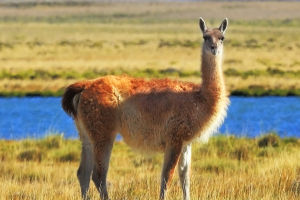Leopards, recognized as the most environmentally adaptable big cats, exhibit a remarkable capacity to thrive in diverse habitats, ranging from grasslands and mountains to rainforests, wetlands, semi-desert areas, and even farmlands.
Presently, researchers have classified leopards into nine subspecies, which include the African leopard, Indian leopard, North China leopard, Far East leopard, Indo-Chinese leopard, Arabian leopard, Persian leopard, Sri Lankan leopard, and Javan leopard.
Among these, the African leopard inhabits Africa, while the remaining eight subspecies, collectively referred to as Asiatic leopards, are distributed across the Asian region.
However, the past century has witnessed a troubling decline in leopard populations due to human-induced factors such as habitat destruction and over-hunting, targeting both leopards and their prey species.
Consequently, leopard habitats have shrunk considerably, leading to a dramatic reduction in their numbers. Currently, only the African and Indian leopard populations show slightly healthier numbers, estimated to be around 10,000 individuals each.
The Indo-Chinese leopard population ranges from 973 to 2,503, while the remaining six subspecies have fewer than 1,000 individuals, with some regions already reporting leopard extinction.
Detailed genetic studies have emerged as a crucial tool for leopard conservation efforts in response to this alarming situation. Researchers from various institutions, including the University of Potsdam in Germany, recently conducted a groundbreaking study published in Current Biology, unveiling surprising insights into leopard genetics.
Traditionally, genetic analysis necessitates the collection of fresh tissue samples. However, this approach poses significant challenges when it comes to leopards. Many subspecies are exceedingly rare, making targeted sampling arduous.
Invasive sampling methods could potentially harm the leopards. Therefore, the researchers opted for an alternative approach, focusing their sampling efforts on leopard pelts housed in natural history museums.
During the study, the scientists sequenced the genes of 26 leopards, comprising 14 African and 12 Asian leopards. Notably, 18 samples were obtained from leopard pelts archived in natural history museums.
The researchers compared and analyzed the genetic differences between various leopard subspecies through comprehensive genomic analysis.
Surprisingly, the study unveiled striking genetic disparities between African and Asian leopards, surpassing those observed between other species, such as brown bears and polar bears.
Specifically, African leopards exhibited remarkably high genetic diversity, averaging twice that of Asiatic leopards. Populations of Asian leopard subspecies with smaller population sizes displayed lower genetic diversity.
For instance, the Far Eastern leopard's genetic diversity was inferior to that of both the Indian leopard and the Javanese leopard, corroborating previous scientific findings.
By examining the mitochondrial DNA of leopards, researchers proposed a hypothesis regarding the species' evolutionary history.
They suggested that leopards originated in northwestern Africa, with a portion migrating to Asia approximately 500,000 to 600,000 years ago, subsequently evolving into the present-day Asiatic leopard.
Over the millennia, only minimal hybridization occurred between African and Asian leopard populations.
This study contributes invaluable insights into leopard genetics and underscores the urgent need for conservation measures to protect these majestic felines and preserve their dwindling populations.
With habitat destruction and hunting continuing to threaten their existence, concerted efforts are imperative to safeguard the future of leopards across their range.


